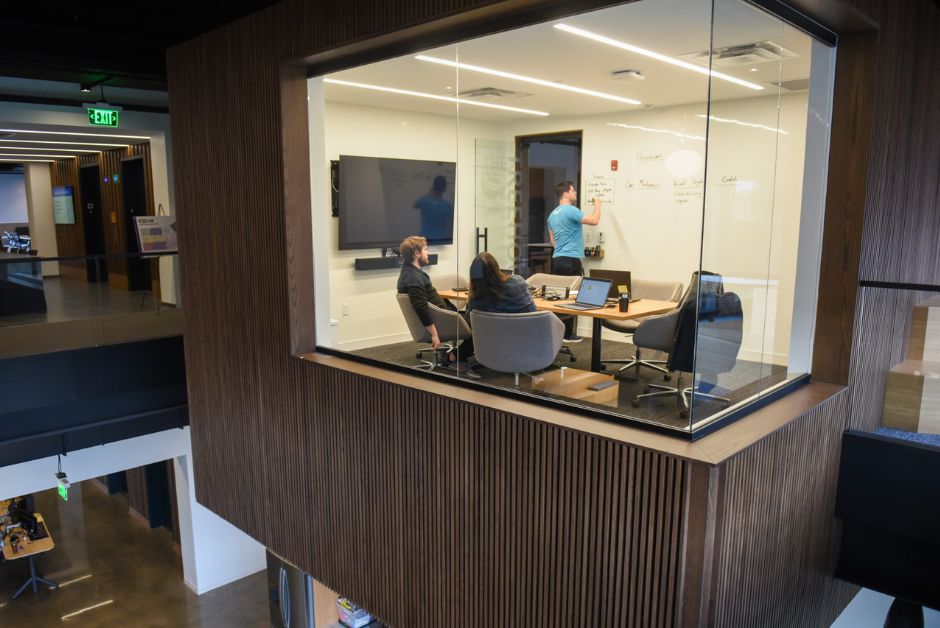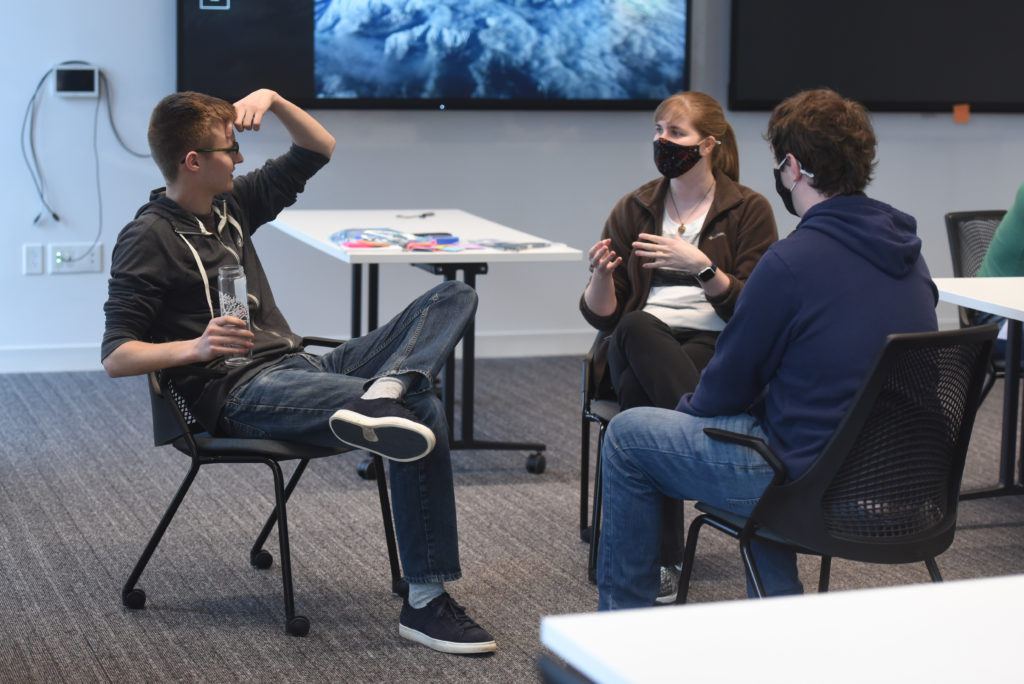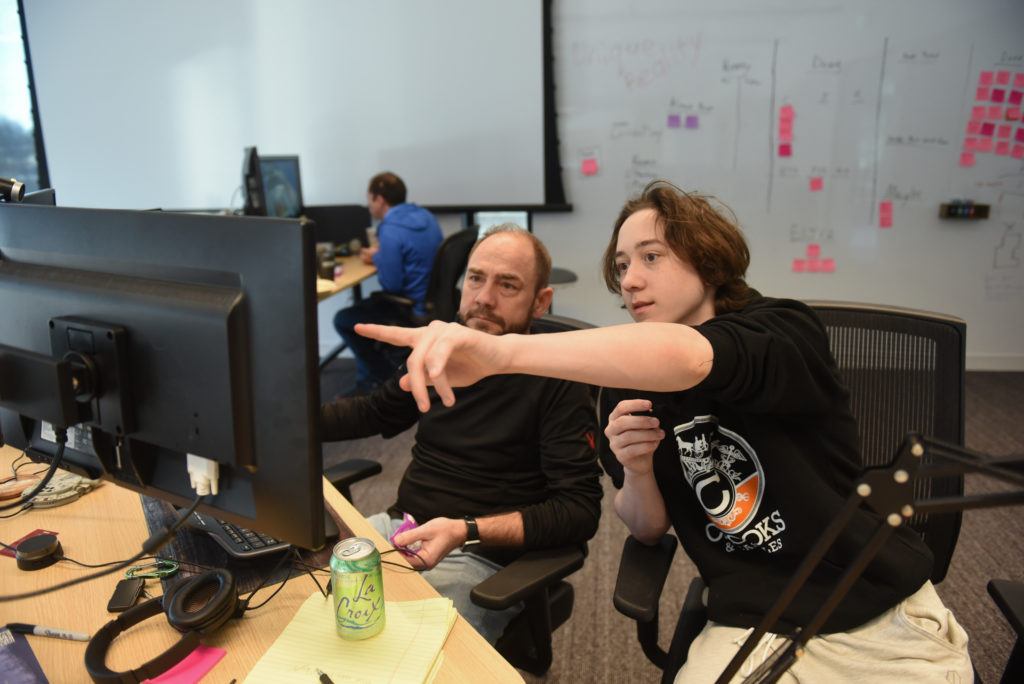
Earlier this year, SEP put on its first-ever game jam. For those unfamiliar, a game jam is an event where teams create video games within a limited amount of time. While the time span can vary wildly, there is usually a theme to provide direction. Most game jams also tend to declare a winner.
Why Did We Have A Game Jam?
My strongest motivation for making the SEP game jam happen was rather simplistic: I like video games.
While I have dabbled in Unity for a decent while, I initially went down the path of Computer Science with the goal of becoming a game developer. My sample size is certainly not large enough to be conclusive, but I have talked to my fair share of Software Engineers that have a similar story.
Hackathon vs Game Jam
SEP already hosts a biannual hackathon as part of our SEP Makes events; it would save time to have a game jam modeled after this tried and true model. Reserving a weekend for a hackathon has always been a good way to keep motivation and productivity high for me, so pouring that effort into game development held the promise of improving game development skills for future endeavors.
When I approached fellow SEPer Judah Doupe, who I knew also hobbies as a game developer, it was not long before we agreed that a game jam was a fantastic idea and got the ball rolling.
As much as my personal desires did some driving of the game jam bandwagon, I never would have suggested it in earnest if I didn’t think there was a reason to separate it from the hackathon. After all, nothing has stopped games from being made at a hackathon (a few definitely have). I have observed over the past years that a pattern has emerged in our hackathons: more and more solo projects.
Teamwork Makes the Dream Work
There’s nothing wrong with working on a solo project at an SEP Hackathon. But some of my first and fondest memories of hackathons are people recruiting team members to their project in the weeks before the hackathon; choosing what project you would work on was a tough decision. Larger projects with half a dozen people aren’t entirely uncommon but are certainly not the majority.
When Judah and I discussed how we would run the game jam we decided that teams should be mandatory. Initially, our reasoning was simple: games are hard to make; even small games can get very complicated very quickly. It is a stretch for one person to do everything for a game in such a short time. The chances of getting a functional game at the end of Sunday is significantly higher when there is collaboration.
Design Opportunities
Another opportunity we realized a game jam would allow us was the inclusion of SEP’s designers more directly. SEP’s designers do amazing work, but as much the hackathon has tried (and it has), the hackathon has not been able to consistently utilize their skills. This is either because hackathon projects are more about proof of concept or because they are focused on low-level functionality. UX doesn’t enter the conversation at all; even if it does, there isn’t time to be spent there due to the weekend window.
But games? User Experience is at the core of a game and is pretty much impossible to ignore. While certainly wishful thinking, it was our hope that we could create an opportunity for designers.
Kicking Off SEP’s First Game Jam
We planned our first game jam to take advantage of the hackathon’s logistics and ran them together. A bit disappointing since I could not attend both, but I was excited to see our experiment in action.
On Thursday, we formed teams and voted on our theme, “Children’s Toys” (not the one I was expecting to win). The newly formed teams spent some time brainstorming ideas for their games. Friday, some people attended the Hackathon pitches while others moved their desks. We all ate some pizza, drank some beer, and started in earnest.

How it Went
Overall, the first SEP Game Jam was a success. We decided that if we had even two teams with games at the end of the weekend, we would call it a success. We had four teams, and each had a playable project ready for presentations on Sunday: definitely a win. 🏆
You can find all the games made on the SEP Spring Game Jam Collection itch.io page.
It’s taken me long enough to get around to writing this that another SEP Game Jam has already taken place, so it’s safe to say that the experience was positive enough to garner a sequel. However, there is certainly more to be said.
Encouraging Collaboration
Creating a space where collaboration is necessary is not terribly difficult when you require working in teams. The real goal was to improve collaboration; in this, I would like to believe it was a success. Collaborating on a game is a very different process than client work.
The team must decide on the overall vision together rather than drawing it from a single ‘source of truth.’ Asking the question ‘is this the right solution’ of a client is not uncommon. The scope in which that question is answered is more straightforward than when creating your own video game. Of the collaborative friction on my team, most was around that vision: what the game would become if we had enough time to finish it.
It was probably about half an hour into a discussion about if a suggested game mechanic fit the vision of the game that someone pointed out we would never reach the point where it would need to be implemented because we had less than a day left and a lot of other things to do.
So while we were able to dismiss larger disagreements with the fact that we would not reach the point where our opinions diverging mattered, there was some butting of heads over minor details. Those were very good opportunities to discuss options and reach a consensus.
I can definitely recommend to anyone attending a game jam that setting out a very clear MVP and vision early will save time later in these discussions.

What did the designers think?
We had two designers participate in our game jam, which was more than we had hoped for. Even one designer was our self-imposed benchmark for success. Their feedback was that it was much more accessible than a hackathon and that they felt useful on their teams.
The projects I have been on at SEP have not included a designer, so having had the opportunity to work with one of them on my team for the game jam was a very eye-opening experience and has made me look forward to having the chance again.
Sharing our games
Hackathon always has presentations at the end of the weekend where people share what they’ve worked on. Game Jam’s presentations simply joined the hackathon’s. The first game started a pattern of audience participation. Having someone unfamiliar play the game while the team discussed the process worked well.
Part of preparing for presentations was getting your game uploaded to itch.io. So the next day we announced to everyone that the games were available to try and asked for people to vote on some various categories including overall best game. We had a good number of people who did not participate try the games and vote, which was awesome.
While the voting is closed, the SEP 2022 Spring Collection will remain available.
Lessons Learned
We met our big goals of actually having enough people to form multiple teams, increasing collaboration, and including designers, but there is always room for improvement. I think the biggest lessons learned from the Game Jam itself were more on the side of ‘how to make games well’ rather than ‘how to run a game jam.’
Communication is key.
My team very quickly learned that too many cooks in the kitchen was a real danger. That was with only 3 of us. Making sure that we each had our own tasks that didn’t overlap with each other was important to keep progress going forward. We solidly defined our MVP and found the ways we could work towards it and managed to avoid stepping on each others’ toes. Even trying to plan everything, we still had to spend time resolving design disagreements.
Be realistically optimistic.
I have high hopes for things while I make them and tend to look at the long-term outcomes. Game Jam games aren’t really aiming for the #1 best seller; it is unwise to do so. Scope will likely grow beyond what is attainable if caught up in the grandiose vision of the game.
Doing the right thing isn’t always the most satisfying thing.
There were a couple of times that one of my teammates and I came to a disagreement about where the game was going to end up. I’ve mentioned our solution to this problem already: admitting we weren’t going to get that far. While an effective solution, it wasn’t a very satisfying one. The big lesson from these discussions was that we needed to have initially decided on our stretch goals. By not having done so, we had to interrupt productivity with high-level design. This ground our progress to a halt and forced us to change context to resolve the topic. After a few long interruptions, coming to the agreement that the discussion was effectively moot was not desirable, but necessary.
Hindsight is 20/20.
Once the core mechanics were working as intended, we had some unexpected freedom. We had to spend some time planning more things to put into the game. It would have been much more efficient to have done so while we were still in ‘planning mode’, but we underestimated how much we could get done. We erred on the side of ‘we won’t get as much done’, and ended up losing some time to it. But we could have, instead, bitten off more than we could chew and spent extra time planning to no benefit. This balance is one that will take practice and iteration to hone. Since the game jam format is pretty unique, that iteration will have to wait until the next game jam.
You can’t be in two places at once.
Most of these lessons learned are from the participation in the game jam. However, there were things to learn from actually running the Game Jam. The most obvious lesson was that we want to run independent of the hackathon. While convenient to combine the two as they do not directly conflict, neither do they inherently mesh.
Taking advantage of having food and beer already bought for Hackathon was a great way to get Game Jam on its feet. Unfortunately, at least Judah and I both want to participate in both events. They are similar, true, but they are very different (delicious) flavors of coding all weekend.
SEP’s Game Jam: Where do we go from here?
There is an ongoing discussion about how to present the game jam in the future. We also want to effectively pass on the lessons learned to future participants. One data point, however, is not a line. Next game jam we will begin tweaking our recipe to find the secret sauce.
Build awesome things for fun.
Check out our current openings for your chance to make awesome things with creative, curious people.